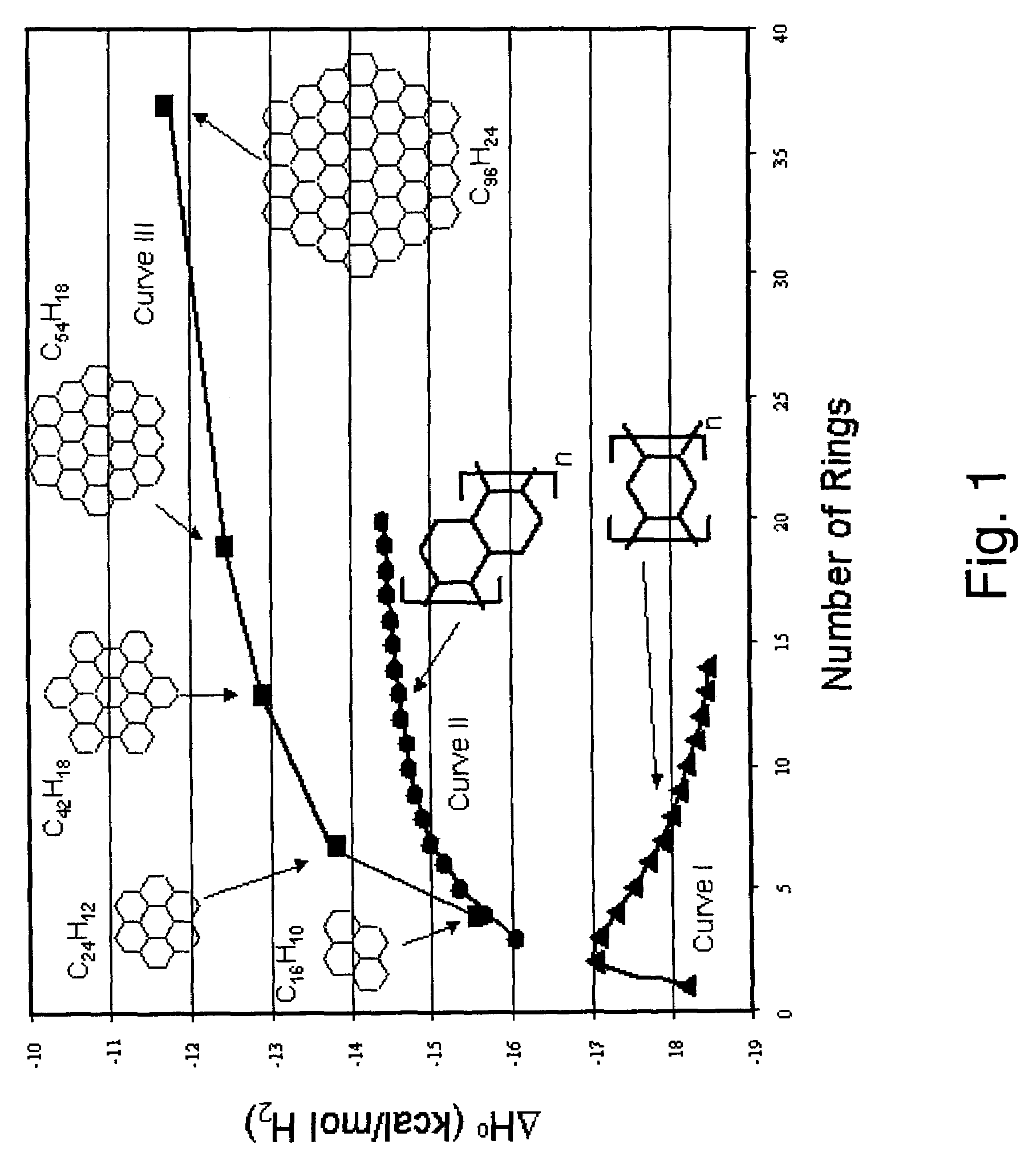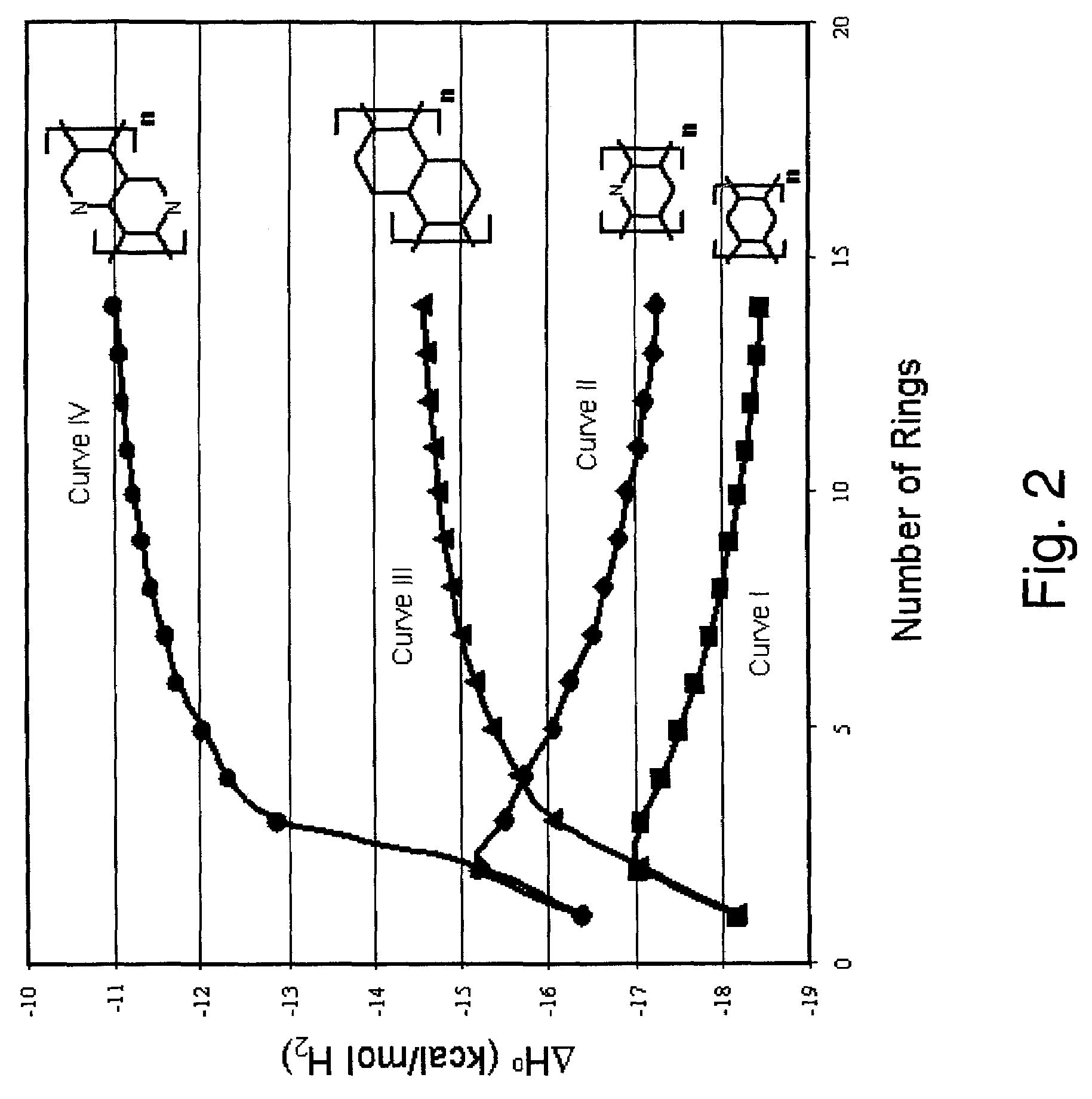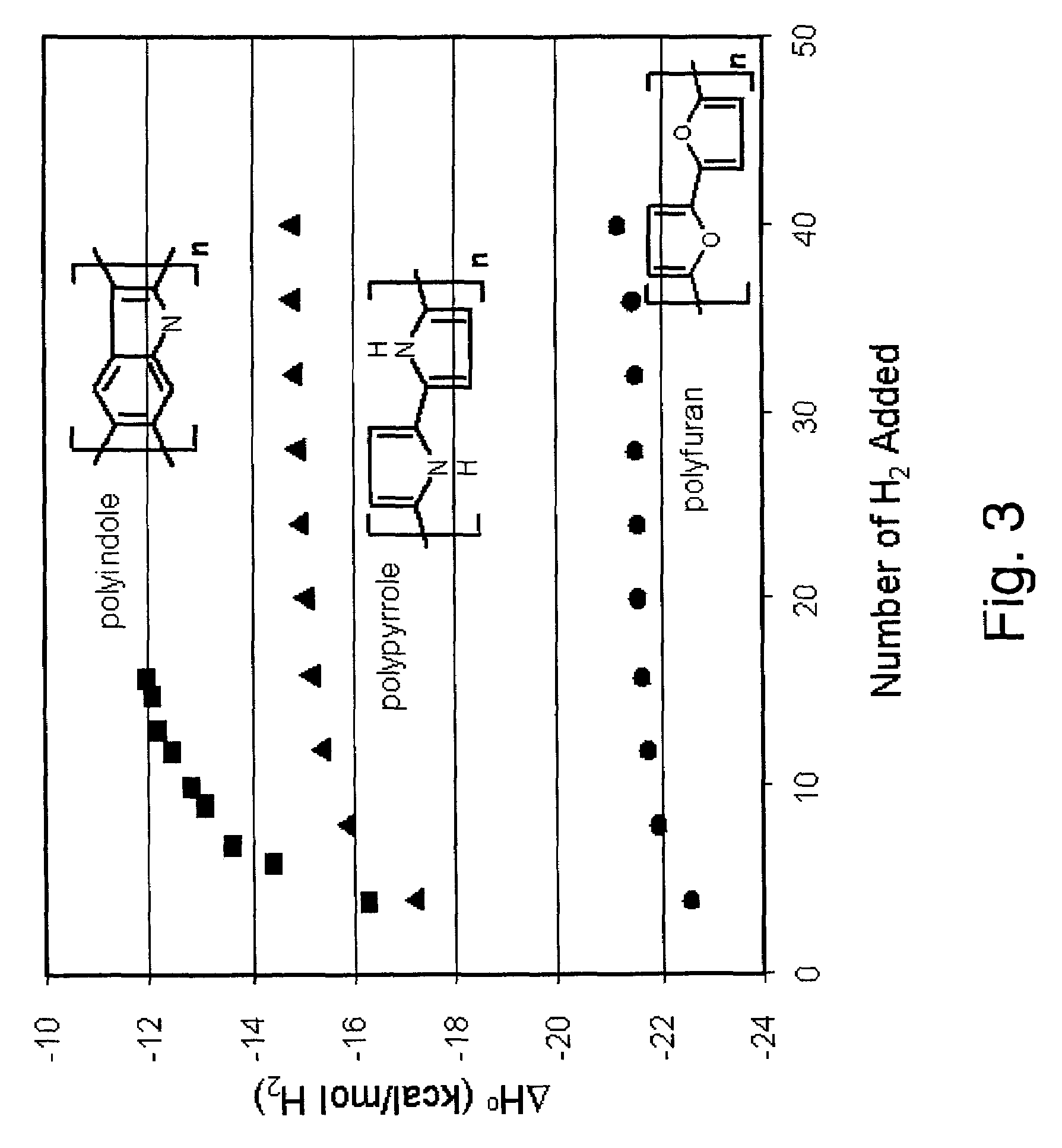Hydrogen storage by reversible hydrogenation of pi-conjugated substrates
a technology of reversible hydrogenation and substrate, which is applied in the direction of electrochemical generators, packaging goods types, transportation and packaging, etc., can solve the problems of increasing the complexity and hence the cost of the hydrogen storage process, the difficulty of utilizing it in a practical hydrogen storage device, and the apparent slow uptake of hydrogen gas, so as to promote the corresponding dehydrogenation reaction, reduce the pressure of hydrogen, and raise the temperature
- Summary
- Abstract
- Description
- Claims
- Application Information
AI Technical Summary
Benefits of technology
Problems solved by technology
Method used
Image
Examples
example 1
Reversible Hydrogenation of Pyrene
[0091]A 0.2 g sample of pyrene (>99%, Fluka) and 0.1 g of rhodium on carbon catalyst (5% Rh, Acros Organics) were ground by hand with an agate mortar and pestle until a uniform color mixture was formed. The mixture was then placed in a 50 cc high pressure reactor (Parr instruments) equipped with a customized grinding apparatus. The grinding apparatus consists of an elongated stirrer shaft with an arc-shaped paddle. The bottom of the reactor contains a stainless steel insert with a concave bottom, which allows the paddle of the stirrer shaft to sweep the bottom of the reactor with ⅛″ clearance. Mechanical agitation of the sample mixture was performed by adding 5–8 stainless steel ball bearings of varying size ( 1 / 16″–¼″ diameter). The stirrer motor was programmed such that rotational direction of the stirrer would alternate between clockwise and counterclockwise directions during the course of the reaction in order to ensure that all of the sample mi...
example 2
Reversible Hydrogenation of Coronene with 5% Rh on Carbon Catalyst and Mechanical Grinding
[0094]A 0.125 g sample of coronene (95%, Acros Organics) and 0.065 g of rhodium on carbon catalyst (5% Rh, Acros Organics) were ground by hand with an agate mortar and pestle until a uniform dark green mixture was formed. The mixture was then placed in a 50 cc high pressure reactor (Parr instruments) equipped with a customized grinding apparatus. The grinding apparatus consists of an elongated stirrer shaft with an arc-shaped paddle. The bottom of the reactor contains a stainless steel insert with a concave bottom, which allows the paddle of the stirrer shaft to sweep the bottom of the reactor with ⅛″ clearance. Mechanical agitation of the sample mixture was performed by adding 5–8 stainless steel ball bearings of varying size ( 1 / 16″–¼″ diameter). The stirrer motor was programmed such that rotational direction of the stirrer would alternate between clockwise and counterclockwise directions dur...
example 3
Reversible Hydrogenation of Coronene with 5% Rh on Carbon Catalyst
[0097]A 0.066 g sample of coronene (95%, Acros Organics) and 0.033 g of rhodium on carbon catalyst (5% Rh, Acros Organics) were ground with an agate mortar and pestle for 15 minutes until a uniform dark green mixture was formed. The sample was then placed in a differential pressure adsorption unit. The adsorption unit consists of two identical pressure cells which are spanned by a differential pressure gauge. The absolute pressure of the two cells are measured independently by pressure transducers. Adsorption of hydrogen by the sample is characterized by a relative decrease of the pressure in the sample cell relative to the reference cell while maintaining an identical temperature between the two cells. The sample was degassed at ambient temperature for 30 minutes under vacuum. Both the sample cell and reference cells were placed under 970 psia (67 bar) hydrogen and heated to 150° C. The hydrogen pressure in the sampl...
PUM
| Property | Measurement | Unit |
|---|---|---|
| pressures | aaaaa | aaaaa |
| pressure | aaaaa | aaaaa |
| weight percent | aaaaa | aaaaa |
Abstract
Description
Claims
Application Information
 Login to View More
Login to View More - R&D
- Intellectual Property
- Life Sciences
- Materials
- Tech Scout
- Unparalleled Data Quality
- Higher Quality Content
- 60% Fewer Hallucinations
Browse by: Latest US Patents, China's latest patents, Technical Efficacy Thesaurus, Application Domain, Technology Topic, Popular Technical Reports.
© 2025 PatSnap. All rights reserved.Legal|Privacy policy|Modern Slavery Act Transparency Statement|Sitemap|About US| Contact US: help@patsnap.com



